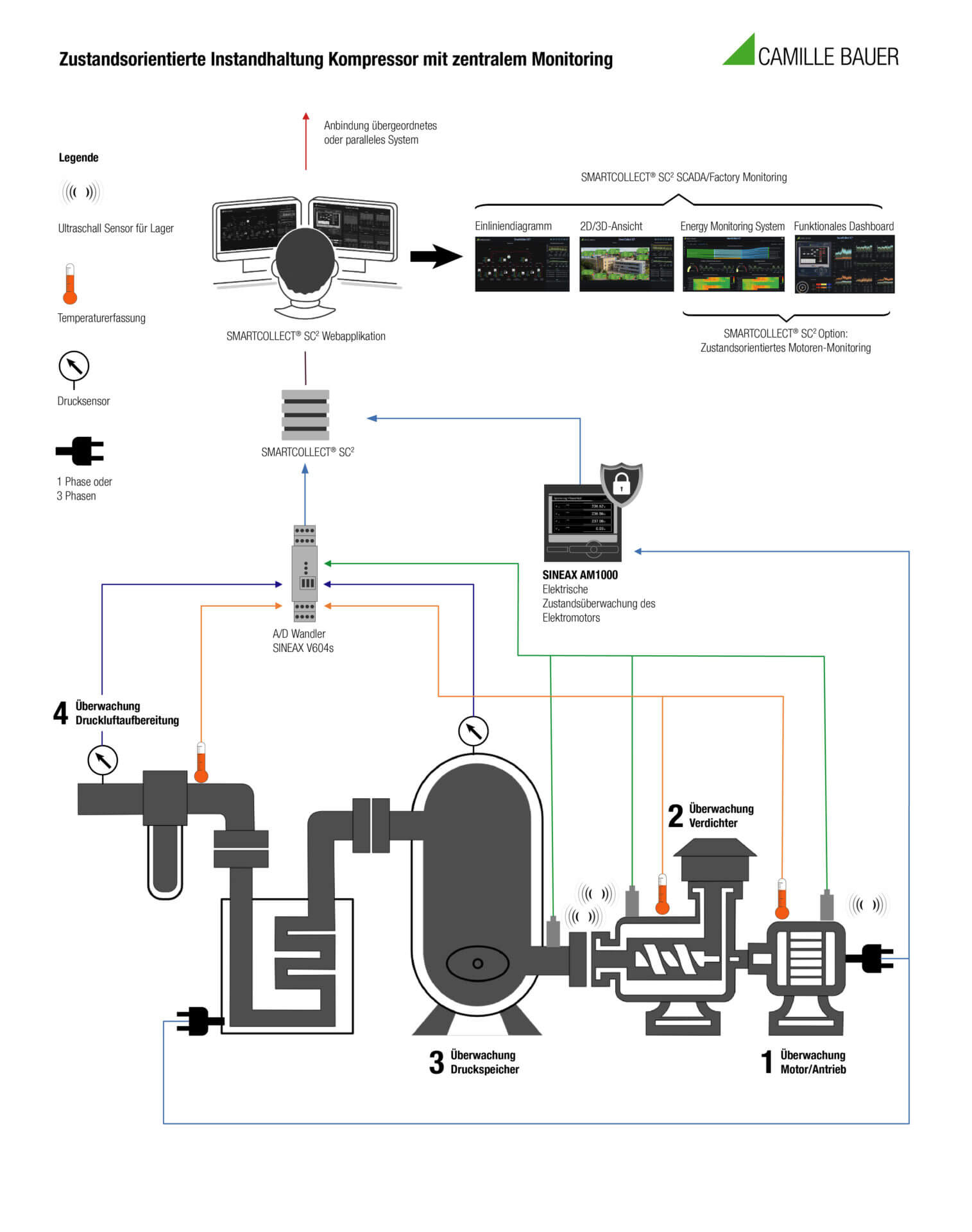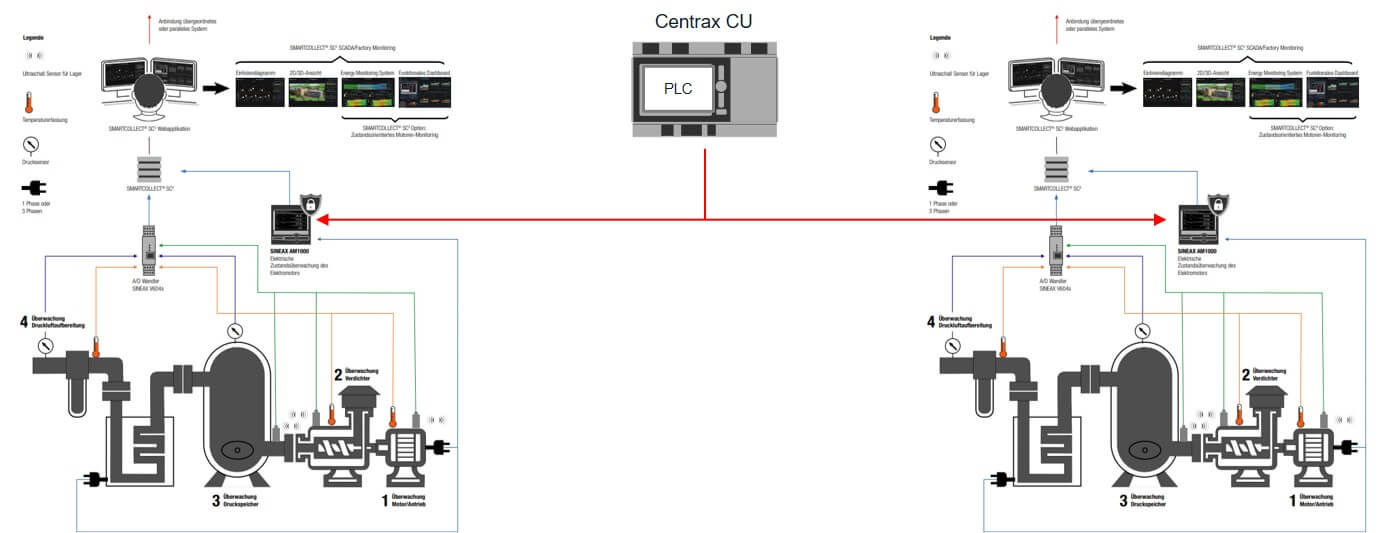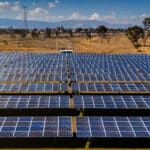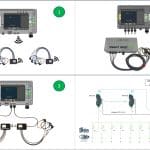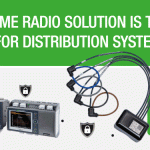Technically, this can be described as follows:
1. The monitoring devices on the motor/drive itself
Electrical monitoring
- Energy and current value recording in real time for possible optimization (CO2 balance)
- Determine state changes of the system based on the electrical direct parameters
- Detection of possible trend and load behavior during operation
- Maintenance measures can be planned for the condition (e.g. motor winding, bearing replacement)
- Detect and, if necessary, optimize changes in the condition of the power quality
Temperature monitoring
- State changes as symptom indicator
- Best suited for root cause analysis in combination with other indicators
- Recognition of possible trend behavior
- Damage prevention through timely shutdown
Mechanical monitoring
- The ultrasound gives an indication of the mechanical condition of the drive
- Changes in condition can be detected at an early stage
- Recognition of possible trend behavior
- Prevention of unplanned downtime
- Maintenance measures can be planned on the condition (cost and time optimization)
2. The monitoring devices on the compressor
Mechanical monitoring compressor (rolling bearings)
- The ultrasound gives an indication of the mechanical condition of the compressor
- Changes in condition can be detected at an early stage
- Prevention of unplanned downtime
- Maintenance measures can be planned on the condition (cost and time optimization)
Temperature monitoring compressor (oil temperature)
- Condition changes as symptom indicator (too little oil, thermostat defective, radiator defective)
- Best suited for root cause analysis in combination with other indicators
- Damage prevention through timely shutdown
3. The monitoring devices on the pressure accumulator
Ultrasound on the pressure line
- Flow monitoring (pressure build-up yes/no/when)
- Changes in condition can be detected at an early stage (e.g. diagnosis of a leakage)
- Recognition of possible trend and load behavior
- Best suited for root cause analysis in combination with other indicators
- Reduction of costs of unused compressed air and thus CO2-relevant
Pressure acquisition at the memory
- In combination with the pressure sensor after air treatment (differential pressure detection)
- Changes in condition can be detected at an early stage (e.g. dirty filter, leaks, icing)
- Permanently too fast discharges below a minimum indicate leakage or undersizing
- Permanently too slow discharges above a minimum indicate a possible oversizing
- Reduction of costs of unused compressed air and thus CO2-relevant
Note: The reduction of the mains pressure by 1bar already causes a saving of electrical energy by approx. 6-8%.
4. Redundancy control
To ensure production reliability, two or more compressors are often used. It might make sense to harmonize the operating hours via changeover control (aging and wear harmonization). In addition, if one of the two compressors fails or requires maintenance, the other can take over.

